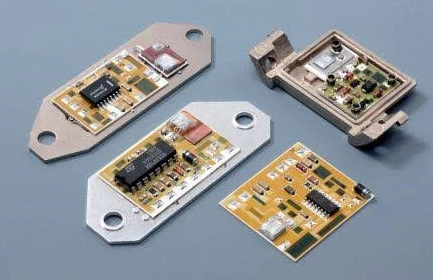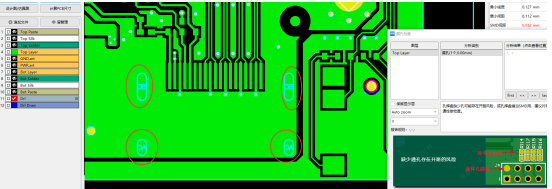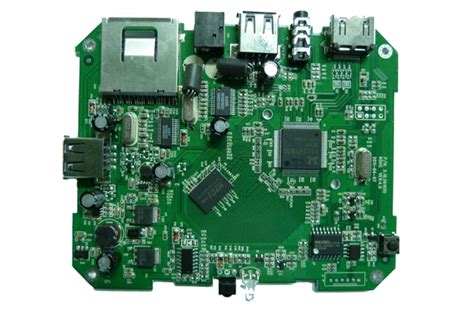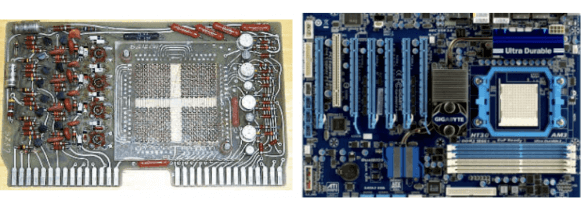The Advantages of Using Ceramic-Based PCBs
Introduction
Printed Circuit Boards (PCBs) are essential components in modern electronics, providing mechanical support and electrical connections for electronic components. Traditional PCBs are typically made from materials like FR-4 (a glass-reinforced epoxy laminate), but in high-performance applications, ceramic-based PCBs are becoming increasingly popular. Ceramic PCBs use substrates made from materials such as alumina (Al₂O₃), aluminum nitride (AlN), or beryllium oxide (BeO), offering superior thermal, electrical, and mechanical properties compared to conventional materials.
This article explores the advantages of using ceramic-based PCBs, including their thermal performance, electrical insulation, high-frequency suitability, durability, and applications in advanced electronics.

1. Superior Thermal Management
One of the most significant advantages of ceramic-based PCBs is their excellent thermal conductivity.
High Thermal Conductivity
- Alumina (Al₂O₃): ~24-28 W/mK
- Aluminum Nitride (AlN): ~150-180 W/mK
- Beryllium Oxide (BeO): ~250 W/mK (though less common due to toxicity)
In comparison, FR-4 has a thermal conductivity of only about 0.3 W/mK. This makes ceramic PCBs ideal for high-power and high-temperature applications, such as power electronics, LED lighting, and RF amplifiers.
Efficient Heat Dissipation
Ceramic substrates help dissipate heat more effectively, reducing the risk of overheating in densely packed circuits. This is crucial for:
- Power modules in electric vehicles (EVs)
- High-brightness LEDs
- Aerospace and military electronics
2. Excellent Electrical Insulation
Ceramic materials provide strong dielectric properties, making them suitable for high-voltage applications.
High Dielectric Strength
- Alumina: ~10-35 kV/mm
- Aluminum Nitride: ~15-20 kV/mm
This ensures minimal electrical leakage and high reliability in:
- High-voltage power supplies
- RF and microwave circuits
- Medical imaging equipment
Low Signal Loss at High Frequencies
Ceramic PCBs exhibit low dielectric loss (tan δ), making them ideal for high-frequency applications like:
- 5G communication devices
- Radar systems
- Satellite technology
3. High Mechanical Strength and Durability
Ceramic substrates offer better structural integrity than organic-based PCBs.
Resistance to Thermal Expansion Mismatch
- Coefficient of Thermal Expansion (CTE) of ceramics closely matches that of silicon, reducing stress in semiconductor packaging.
- Prevents cracking in solder joints under thermal cycling.
Chemical and Corrosion Resistance
- Resistant to moisture, acids, and solvents.
- Suitable for harsh environments (e.g., automotive, industrial, and marine applications).
4. Miniaturization and High-Density Interconnects
Ceramic PCBs support fine-line circuitry, enabling compact and lightweight designs.
Thin-Film and Thick-Film Technologies
- Allows for ultra-thin traces (<50 µm) and high-density interconnects.
- Used in microelectronics, MEMS sensors, and advanced packaging.
Multilayer Ceramic PCBs
- Supports complex multilayer designs without delamination risks.
- Common in RF modules and integrated power systems.

5. Applications of Ceramic-Based PCBs
Due to their superior properties, ceramic PCBs are used in:
Power Electronics
- IGBT modules
- DC-DC converters
- Solar inverters
LED Technology
- High-power LED arrays
- Automotive lighting
Aerospace and Defense
- Avionics systems
- Radar and missile guidance
Medical Devices
- Implantable electronics
- Diagnostic imaging equipment
Conclusion
Ceramic-based PCBs offer significant advantages over traditional FR-4 boards, particularly in high-power, high-frequency, and harsh-environment applications. Their superior thermal conductivity, electrical insulation, mechanical durability, and miniaturization capabilities make them indispensable in advanced electronics. As technology continues to push toward higher performance and reliability, ceramic PCBs will play an increasingly vital role in next-generation electronic systems.
Future Outlook
With advancements in additive manufacturing and nanotechnology, ceramic PCBs may become more cost-effective, further expanding their adoption in consumer electronics, IoT devices, and renewable energy systems.






